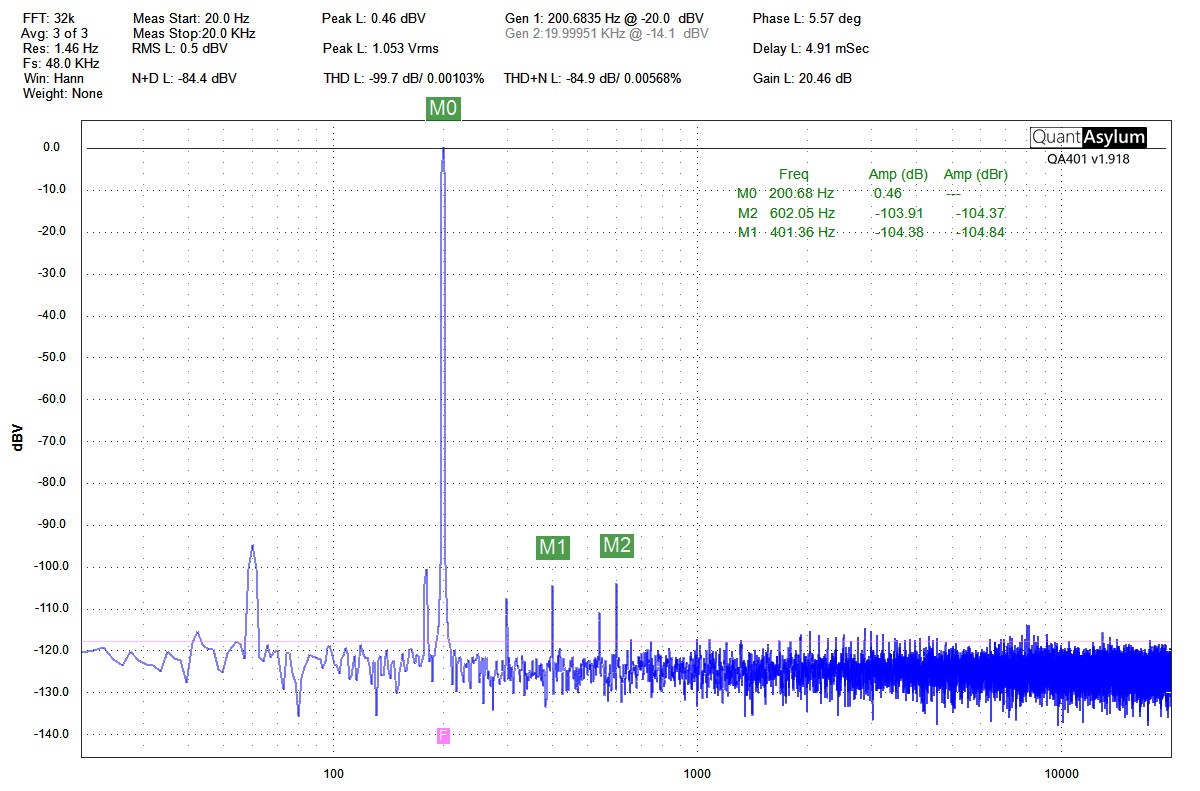

|
The LM358Why You Should Not Use It©2021 By Jack Orman The LM358 is a dual op amp that has been around for many years. It has a small current draw while idling and can be powered with low supply voltages, which makes it attractive for some circuits. It is also promoted as a single-supply amplifier. I see it frequently used and recommended for audio circuits. There are a couple of known problems with the LM358 that make it unsuited for many audio applications such as guiar pedals. The first is that the chip specifications show it to be much more noisy than similar dual op amps; as much as 3 or 4 times more noise than some of the commonly used chips. The second problem is that the LM358 is known to have siginificant crossover distortion caused by the output transistors not switching seamlessly when driving a load and thereby causing a dead spot in the output wave. The image below is the output of a direct box that I made using one of my Opamp Multipurpose pc boards. The chip that is in the stock box is an NE5532AP from Texas Instruments. The gain control is cranked to the max, which is slightly over +20db. There is s a little 60 Hz AC power noise that is leaking in, probably because the box is open on the workbench with no back panel. You might note that there are only odd harmonics from the 60 Hz line noise, and I have marked them as 3, 5, 9, and 11. M0 is the 200 Hz test frequency while M1 is the second harmonic and M2 is the third. The fifth harmonic of the test signal can be seen too, but it is barely above the noise floor at 1000 Hz.
The next step was to change out the op amp chip. I replaced the 5532 with an RC4558 also from TI.
The fnal step was to drop in an LM358 to see how it performed, and whether the corssover distortion problem could be verified. I used a Fairchild LM358N that was from fairly recent production.
The harmonic distortion of the 4558 and 5532 are below -100 db and are inaudible, while the the LM358 distortion is high enough to be heard by most users. It clearly is not suited to high quality audio use and should be avoided whenever possible.
I might use the LM358 for low frquency oscillators where the small current requirement is an advantage, or even in a rectifier circuit for a compressor or auto-filter. Otherwise, I would not use it in pedal circuits.
Share this article with your Twitter followers: Tweet
|
AMZ-FX Home Page
Lab Notebook Main Page
Guitar Effects Blog
©2021 Jack Orman
All Rights Reserved


